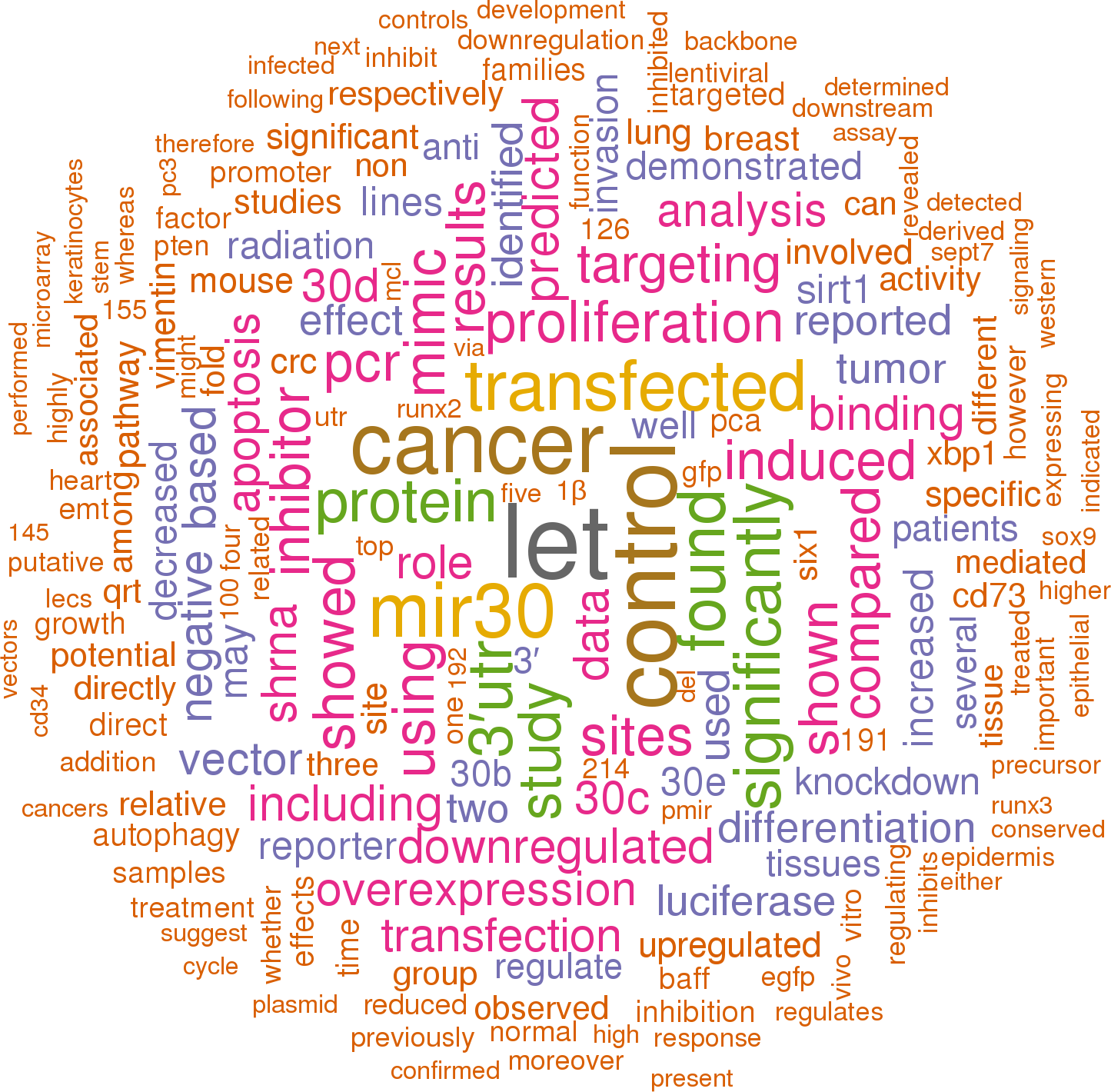Accession
MI0000088
Symbol
HGNC:
MIR30A
Description
Homo sapiens
hsa-mir-30a precursor miRNA
Summary
Caution, this is an AI generated summary based on literature. This may have errors. ?
MIR30A is a microRNA encoded on human chromosome 6, along with its clustered pair MIR30C2, and is a member of the miR-30 family, which is distributed across three different chromosomes [PMC4873751]. This microRNA plays a significant role in cellular processes, as evidenced by the fact that targeting MIR30A can decrease autophagy in primary LMC cells and increase their sensitivity to the drug Imatinib [PMC6888542]. The human MIR30A loop sequence (MIR30Ahsp) is utilized for its ability to express high levels of siRNAs when used in shRNAmirs [PMC2737240]. Furthermore, the inhibition of exosomal MIR30A expression has been shown to reduce the protective effects of EGCG during hypoxic injury [PMC7054242]. In gene expression studies, MIR30A has been identified as one of several genes with downregulated expression when 191 genes were upregulated and 284 were downregulated in a specific context [PMC7260613]. Additionally, MIR30A has been found to target specific genes such as DC-STAMP which are unique to osteoclast-specific fusogens [PMC7504439].
Literature search

486 open access papers mention hsa-mir-30a
(2535 sentences)
(2535 sentences)
Sequence
4160938
reads,
5468
reads per million, 158 experiments
gcgacUGUAAACAUCCUCGACUGGAAGcugugaagccacagaugggCUUUCAGUCGGAUGUUUGCAGCugc
(((.((((((((((((..((((((((((((((....))).....))))))))))))))))))))))).)))
(((.((((((((((((..((((((((((((((....))).....))))))))))))))))))))))).)))
Structure
a UC ----- a gcg cUGUAAACAUCC GACUGGAAGcu gug a ||| |||||||||||| ||||||||||| ||| cgu GACGUUUGUAGG CUGACUUUCgg cac g C -- guaga c
Annotation confidence
High
Do you think this miRNA is real?
Comments
The mature sequences miR-30 [1] and miR-97 [2] appear to originate from the same precursor. Subsequent data confirm that both arms of the precursor appear to give rise to mature miRNA sequences (Pfeffer S, pers. comm.). Landgraf et al. later showed that the 5' product is the predominant one [5]. Related miRNAs are processed from the 5' arms of other precursor loci (mir-30b, MIR:MI0000441; mir-30c-1, MIR:MI0000736; mir-30c-2, MIR:MI0000254; mir-30d, MIR:MI0000255; mir-30e, MI0000749).
Genome context
chr6: 71403551-71403621 [-]
Disease association
hsa-mir-30a is associated with one or more human diseases in the Human microRNA Disease Database
| Disease | Description | Category | PubMed ID |
|---|
Mature hsa-miR-30a-5p
| Accession | MIMAT0000087 |
| Description | Homo sapiens hsa-miR-30a-5p mature miRNA |
| Sequence | 6 - UGUAAACAUCCUCGACUGGAAG - 27 |
| Evidence |
experimental
cloned [2,4-6] |
| Database links |



|
| Predicted targets |



|
Mature hsa-miR-30a-3p
| Accession | MIMAT0000088 |
| Description | Homo sapiens hsa-miR-30a-3p mature miRNA |
| Sequence | 47 - CUUUCAGUCGGAUGUUUGCAGC - 68 |
| Evidence |
experimental
cloned [1,4-5], Northern [1] |
| Database links |



|
| Predicted targets |



|
References
|



